Off’times when things are just crazy and stupid, the only thing you can really do is something creative as you fight against the screaming maw of the Void.
This is usually when I turn to the hallowed halls of recreational geometry, shapes just be shapin’, diggit? There’s a kind of Zen-like quality that appeals to me in their study.
I have mentioned elsewhere in the ‘stack that I find it really intriguing that radiolaria can exhibit wild, geodesic sphere-like enclosures, all without the benefit of having to study math in school or even knowing what a decimal point is. I mean, maybe they do and we just lack proper tools to communicate with them, but sure seems like they're just making shapes without blueprints, and while there is a common argument that because of a geodesic sphere is using the least amount of energy per unit volume, they're just kind of naturally following the shape of spacetime, that I kind of wonder if there isn't maybe just a little more to it than that, as we can get a might presumptive of our significance in the scheme of things.
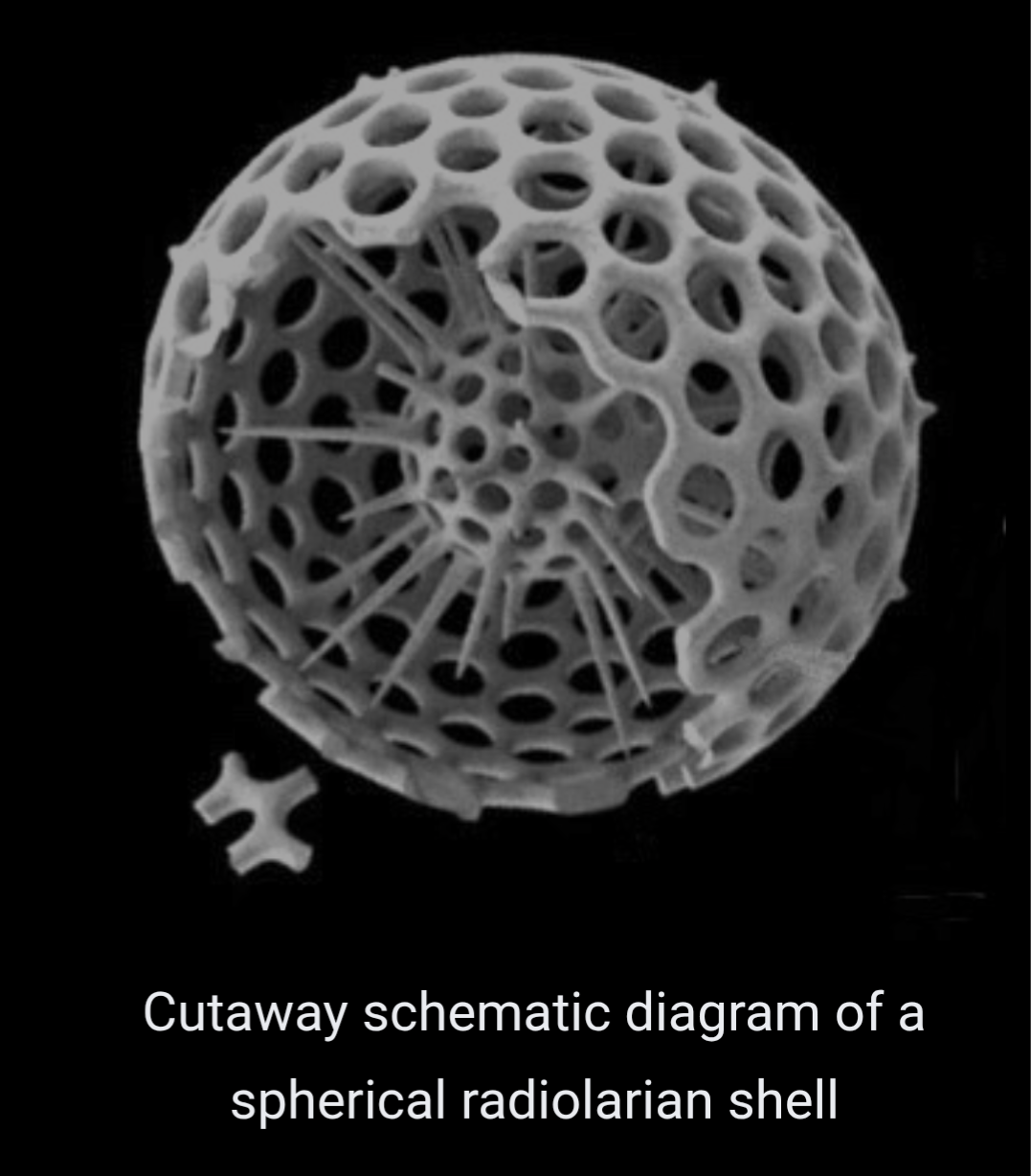
Regardless, it gets me to thinking, can someone, a mere user of available technology as simple as, say, a pen and a ruler, paper and glue-stick, produce triangulated truss structures without resorting to busting out the dusty graphing calculator and invoking the trigonometric gods?1
Turns out, yes, you can.
It turns out if you draw a square, and then you draw the same square right next to it forming a rectangle, and then from the bottom left corner of the first square you draw a diagonal up to the top right of that square, can you draw another diagonal down to the bottom right of the second square, and you wind up with a kind of flattened triangle.
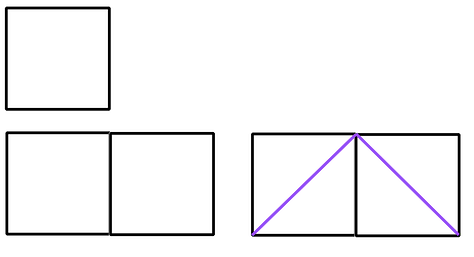


For the interested, the “glue” triangle needs to be glued into place over the number 1 triangle, with mountain folds along the purple lines.
If you do it a bunch of times and then you add a little bit of a lip at the top and bottom what you have is six triangles, three with their apex pointing up at the top of the paper and three pointing down, plus the 7th which you use is a glue tab. Fold those triangles around and you’ve just made a flattened octahedron.
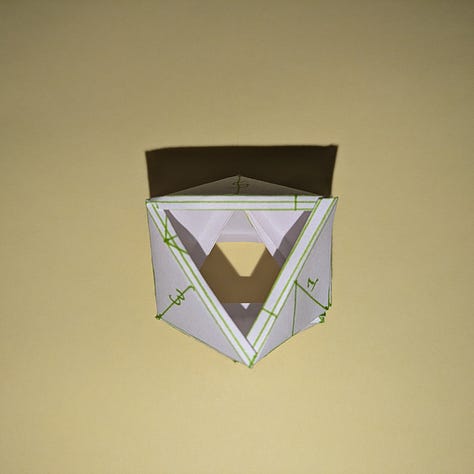
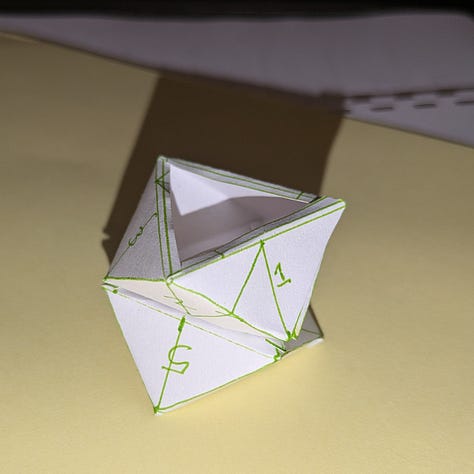
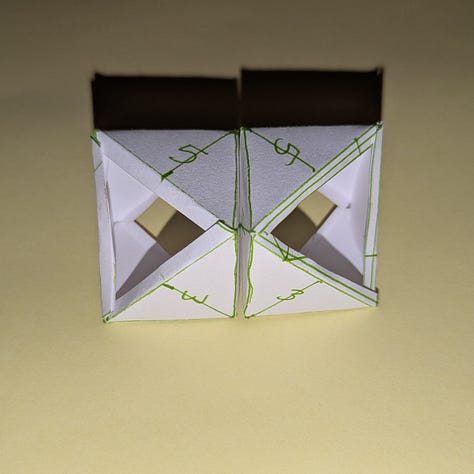
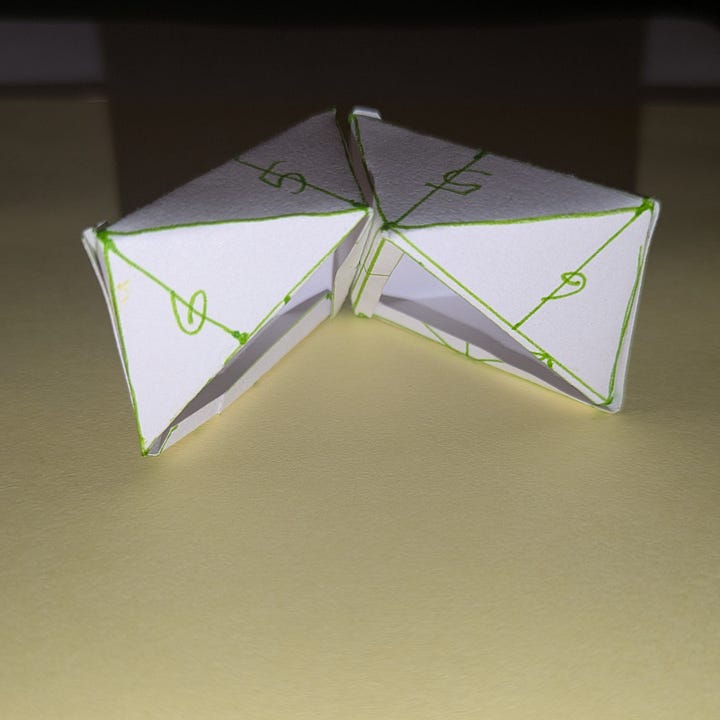
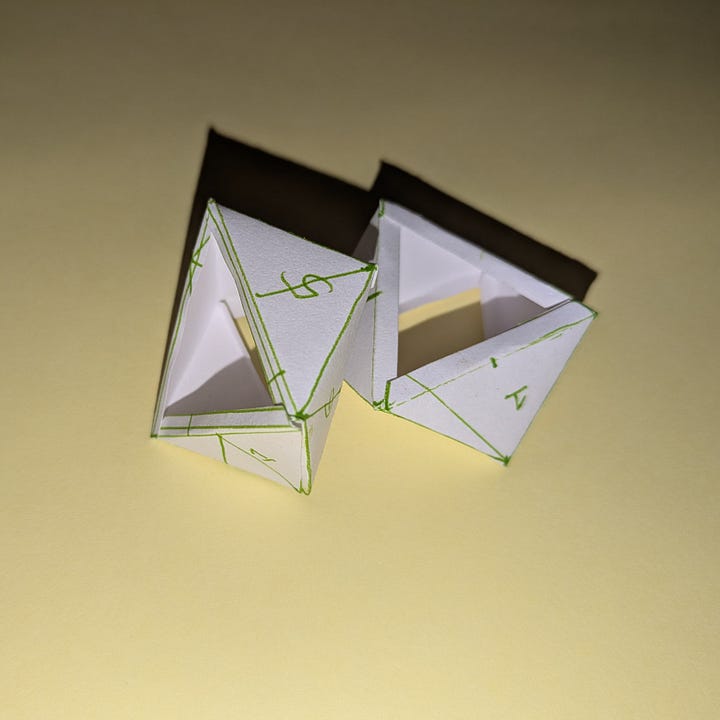
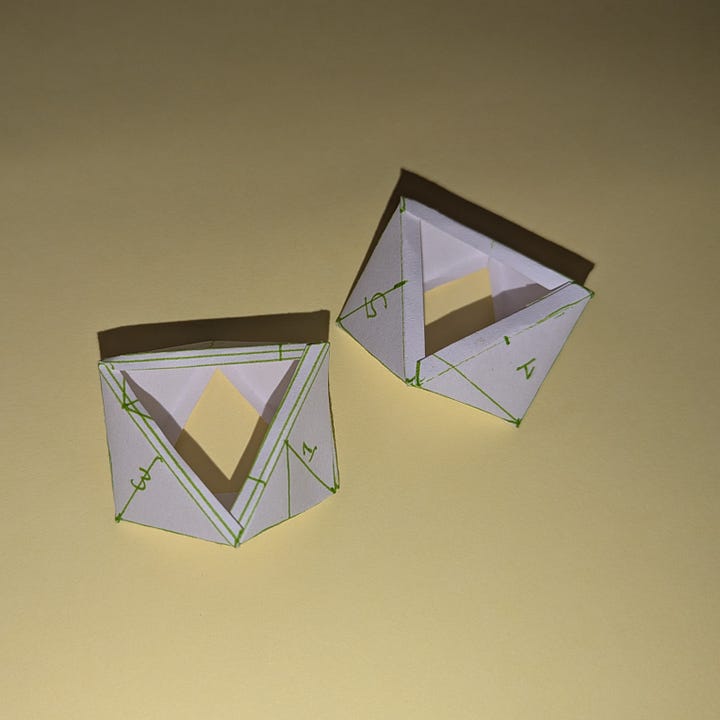
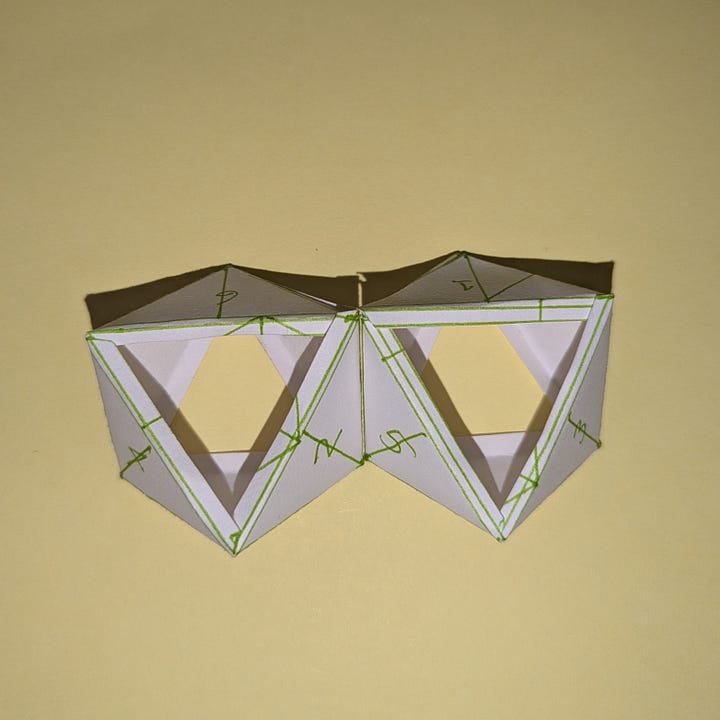
You could connect them together by gluing in tetrahedrons to have a true octahedron tetrahedron truss, or you could just use circles at each of the vertexes, glue those on which I haven't shown here, but once I find where my hole punch is I will get to that later.
You can, of course, find many examples of architectural truss pavilions on the Internet, but good luck trying to design them yourself without having access to parametric equations and CAD software that can handle 3D computations. This is all fine if you live in a rich country, and you yourself are rich and I mean that in every sense— this is Way beyond middle class because after you get through the zoning and the architects and the builders and and and…. you're looking at a lot of money getting dropped on something after that may or may not be temporary, and that's not really my style.
I mean the thrust here being that this took a ridiculously small amount of time to accomplish and required no printer for exactness. I just needed something that I could draw a square with repeatedly and even the fact that it's square doesn't exactly matter. it just makes pleasing triangles better. This also means that if you have access to a straight edge and a stylus the only thing limiting you for making architectural trusses is the availability of sheet metal and relevant tooling.
I don't have a lot of that on hand, but I do have office copy paper and a purple glue stick and the resulting lil’ dudes are surprisingly strong for such flimsy (and inexpensive) material.
Of course, they do not form a spherical enclosure like the radiolaria, however I have some ideas on that for a future missive. However, for baseline terrestrial uses, one could easily make a flat-roofed building, stacking octahedrons for support columns and having a honeycomb affair for your roof and/or second, third, and fourth floors.
Having the thickness allows for dead airspace to provide insulation and optical effects. Assuming the open faces on either side are covered with something of reasonable thickness, say polycarbonate, and one can think of some delightful uses of different color tints to play around with light.
But one could also just use aircraft fabric that's starched up with tightening dope and have a rather pleasing tent effect in the Sun, enclosing a volume of space for a very small amount of material and having the side benefit of the familiarity of walls which domes seem to give some people a real problem, what with not needing them outside of privacy concerns.
I'll be treating this as a kind of fidget spinner and will have future posts where I make some more developed models, all, of course, with paper and glue stick, but it seems to be my working aesthetic right now. Enough of these put together would make a rather interesting octahedral pyramid that has some real sci-fi qualities to it.
In terms of the aesthetics, one can picture nomad camps having to disassemble their little post-apocalyptic hut and making the long journey to a watering hole that is a little less radioactive or some such. Or we extrapolate farther and instead of making the octahedrons out of sheet metal, we make them out of aerogel, using special type of mushroom glue to hold them together and then we just tow our homes behind us as they float in the sun, diffracting the light just so and making us think of better days.
Cthulhu vs Euclid, News at Eleven!



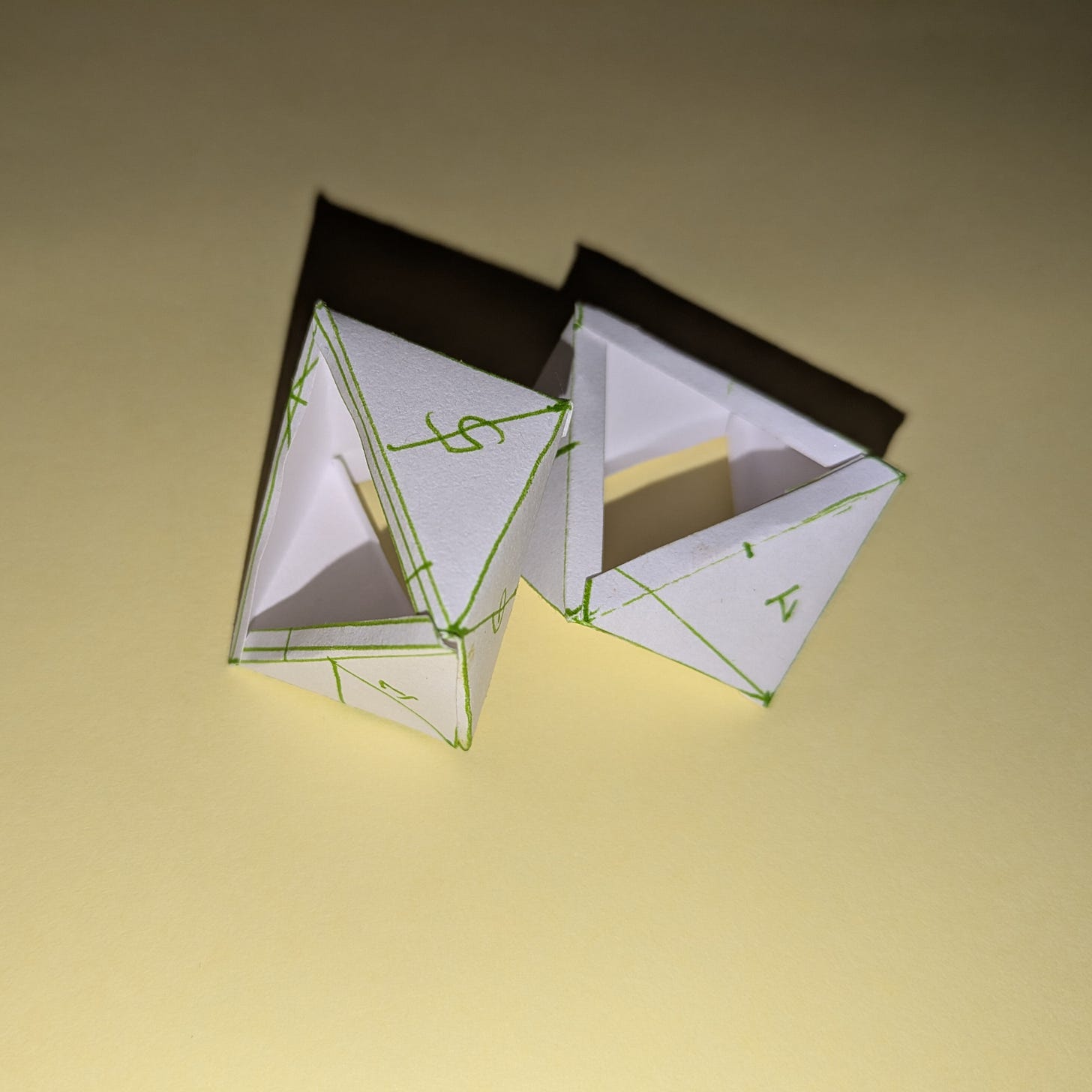
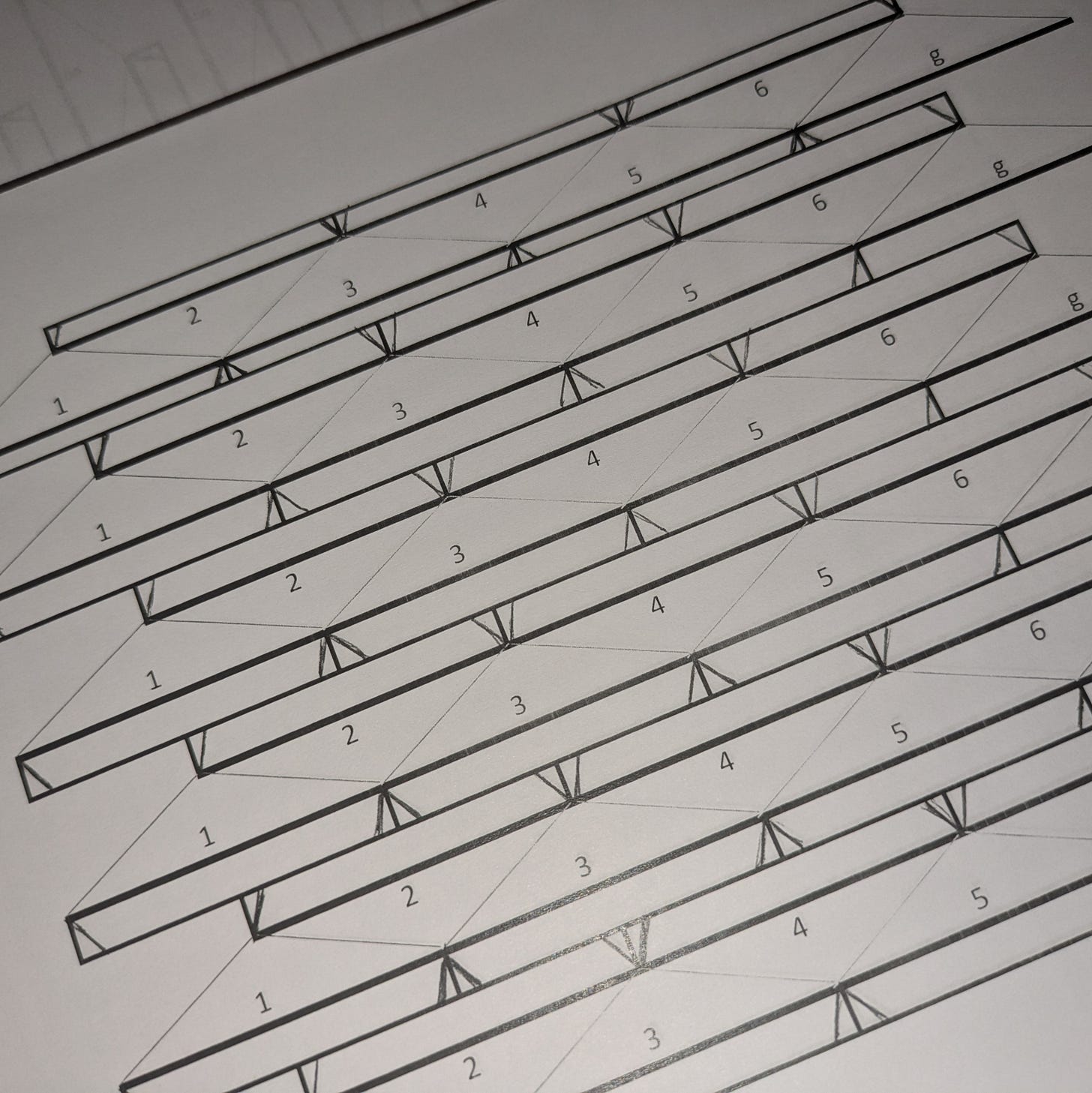
I love these glimpses into how your brain works!
You boggle my mind, but when the Apocalyse arrives, I want you on my team.